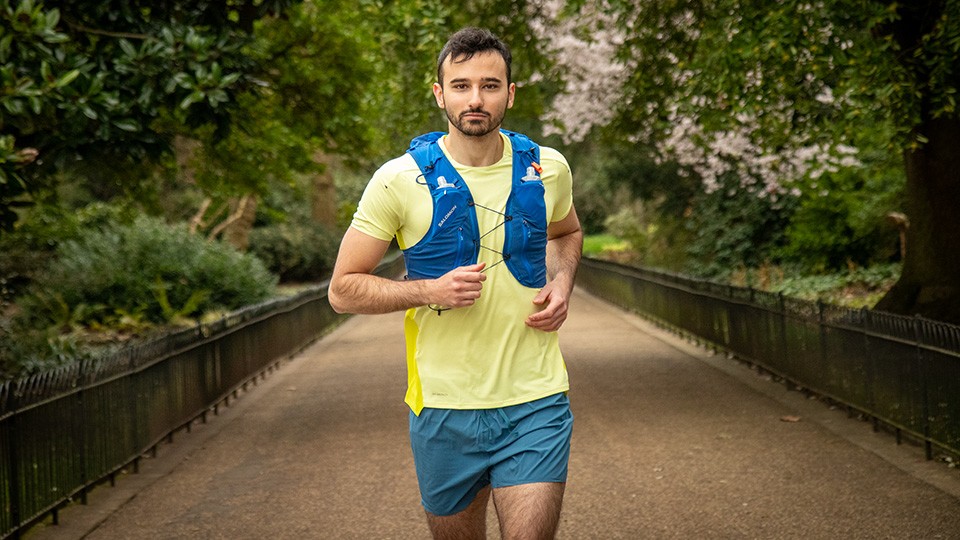RUN BETTER WITH OUR NEWSLETTER
Weekly updates on gear, offers & events
JOIN NOW
Simply put, a hydration vest – sometimes called a hydration pack or race vest – is an extremely lightweight backpack. It's designed with multiple pouches and pockets to carry everything you might need on a run, making your drinks and essentials easily accessible.
Hydration vests come in different volumes and sizes, so there is one for every runner: whether you're commuting 5-10 km into work or undertaking an adventurous 100-miler on technical trails.
In its purest sense: whenever there is a need to comfortably carry items essential to that day’s run, which won’t fit in your pockets easily or comfortably. As the name suggests, also on any run where you need a handy source of water.
The principal items you need will vary depending on the length and terrain of the run. A 6-15 mile run in an urban environment will involve some different items to a 2-4 hour or longer road or multi-terrain run that might take in exposed areas of a different character. Items may or may not include: water/fluid, snacks, phone, keys, hats/gloves, spare kit, headtorch etc. Remember: just because a route is flat or low level, doesn’t mean it might not be windy or it will not rain!
Packs for this category are the ones that are ideal for shorter endurance events or weekend training runs, where the conditions and terrain allow you to carry the essentials without overdoing it. Also likened to travelling ‘fast and light’, they are at the lower of volume capacity.
The best trail-running vest is somewhat subjective, and also depends on how far or how long you are running. Depending how much you need to carry, you can easily wear one of the lightweight packs above if the distance is fairly low and you are not going to exposed hills or moors. If going out for a few hours or on a long day expedition, a larger volume pack to enable you to carry more spare kit and snacks is desirable (see below).
Generally, if commuting you may have a lot to carry, with change of clothing and shoes as well as a pad or laptop to deal with, so one of the mid-large volume packs are best choices. Check out that the large volume vest can be compressed by straps, so it will fit snugly whatever load you are carrying. Examples to look at here are:

If you are able to get to our London store to try on a selection, that is always advisable. If it isn’t possible, just take a few minutes to look at the guideline sizing in the details of each particular model, or contact us for advice.
Again, this is a personal thing, with advantages for both. Whether you’re knocking out a 10-mile training run, or a 50-mile race, the ease, comfort, and capacity of your vest’s fluid storage system is a top consideration.
Some runners (including your author) prefer to carry two flasks stowed in front pockets, while others prefer a larger reservoir that fits into a sleeve in back. Every vest in our range is compatible with both options. Reservoirs are not usually included in your purchase, whereas flasks usually are.
GaryhApril 3, 2025 at 5:23am
Before I started out a major endeavour, I researched ultra-lightweight running vests. Eventually I settled on a Salomon Active Skin 8 (in 'Surf the Web' blue); a truly wonderful addition in an entirely different (but not unexpected) application: long-haul road cycling (additional to two onboard bottles). These thoroughly well thought out vests sit snugly high up and unobtrusively on the back with no pressure placed anywhere — the two flasks, one of which is water, the other electrolyte mix plus munchies in the outboard pocket, are easily reached when riding. These form-fitting vests are abundant in the running community, and they are also seeing popular use in canoeing, skiing, long-haul road gravel and MTB use, taking a similar put-it-to-creative-use trajectory similar to Camelbak when they first introduced their hydration packs 30+ years ago.
Reply